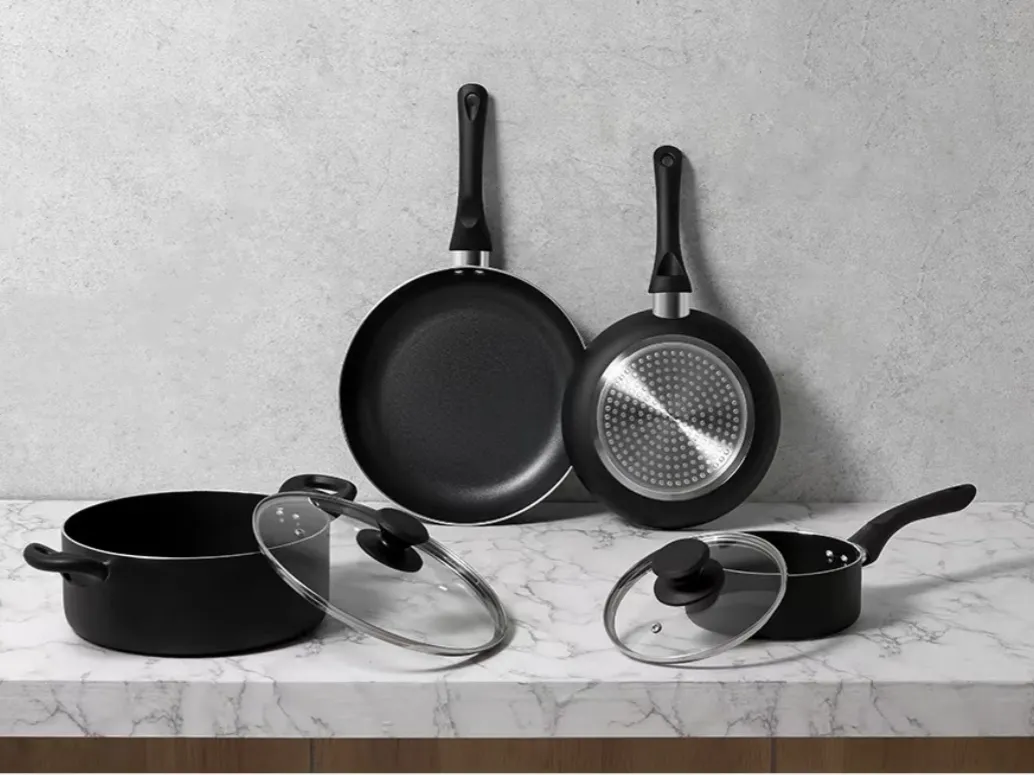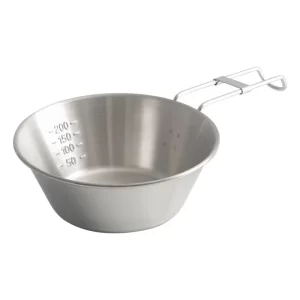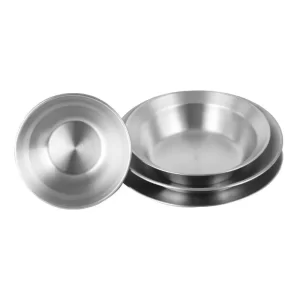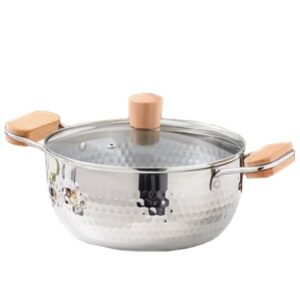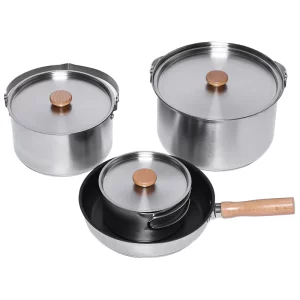With the frequent occurrence of extreme weather and the popularization of low-carbon living concepts around the world, the kitchen, as an important scene of household energy consumption, is ushering in a green revolution. Stainless steel cookware has become the core choice of low-carbon kitchens in 2025 due to its recyclability, durability and low-carbon production model. This article will deeply analyze the environmental advantages of stainless steel cookware and reveal why global consumers and brands are turning to this sustainable solution.
Table of Contents
ToggleThe Environmental Gene of Stainless Steel
Low-carbon Production
The environmental protection of stainless steel cookware starts from the production end. Taking Shanghai Guanhua Stainless Steel as an example, it has obtained ISO 14068-1 carbon neutrality certification for three cookware products through increasing the proportion of photovoltaic power generation and carbon offset measures, becoming an industry benchmark. The global stainless steel industry is accelerating its transition to green energy, and it is expected that the market size will exceed US$58 billion by 2033, with a compound growth rate of 6.41%.
100% Recyclable
Stainless steel is the only metal material that can be infinitely recycled, with a recycling rate of more than 90%. Compared with traditional coated cookware (such as Teflon-coated aluminum pots) that cannot be recycled after the coating peels off, the full life cycle utilization rate of stainless steel cookware has been significantly improved, reducing landfill pollution.
Durability Revolution
High-quality stainless steel (such as 304/316 grade) is corrosion-resistant and high-temperature resistant, with a service life of more than 10 years, far exceeding the easily worn coated aluminum pots or ceramic cookware on the market. Taking the Chinese stainless steel pull-out basket market as an example, its annual compound growth rate reached 11.83%, and consumers’ demand for durability directly promoted the industry’s growth.
Stainless Steel VS Traditional Cookware
| Criteria | Stainless Steel Cookware | Non-Stick Coated Cookware (e.g., Teflon-coated Aluminum Pots) |
|---|---|---|
| Recyclability | 100% recyclable, zero pollution | Non-recyclable once coating degrades; aluminum prone to oxidation |
| Chemical Safety | Coating-free, no PFAS/PFOA risks | Releases toxic perfluorinated compounds at high temperatures |
| Lifespan | 10+ years | 2-3 years (requires replacement due to coating wear) |
| Carbon Footprint | Low-carbon production; 30% lifecycle reduction | Frequent replacements multiply resource use and emissions |
Data sources: World Stainless Association, International Environmental Agency Report
3 Major Trends in Low-Carbon Kitchens and the Compatibility of Stainless Steel
The demand for sustainable materials has surged
The European and American markets have increased their attention to environmentally friendly cookware by 120%, and consumers are more inclined to choose products marked with “food grade 304/316 stainless steel” and “carbon neutral certification”.
Dual demands of intelligence and durability
Stainless steel is compatible with a variety of cooking scenarios, such as induction cookers and gas stoves, and can be combined with copper/aluminum cores to improve thermal conductivity and meet the diverse needs of smart kitchens.
Policy-driven green transformation
Policies such as the EU’s “Carbon Border Tax” force kitchenware companies to adopt low-carbon processes, and the recycling properties and clean production model of stainless steel make it the first choice for compliance.
Chancescook: Defining the Future of Sustainable iKtchens with Innovative Technology
As an industry-leading stainless steel cookware manufacturer, Chancescook is committed to providing customers with environmentally friendly, safe, and high-performance solutions:
- Material innovation: using 316L medical-grade stainless steel, which is 20% more corrosion-resistant than 304 and suitable for cooking acidic ingredients;
- Low-carbon process: 30% green electricity is used in the production process, and the goal is to achieve carbon neutrality for the entire factory in 2030.
- Lifetime warranty: 10-year durability commitment to reduce resource waste;
- Global certification: Passed FDA, GB4806.9-2016, and ISO 14068-1 standards to ensure safety and environmental protection.
Take action now and join the low-carbon kitchen revolution
Choosing Chancescook stainless steel cookware is not only choosing health and quality, but also contributing to the sustainable development of the earth. Click on the official website to explore our environmentally friendly series of products and convey the warmth of green life with every cooking.

